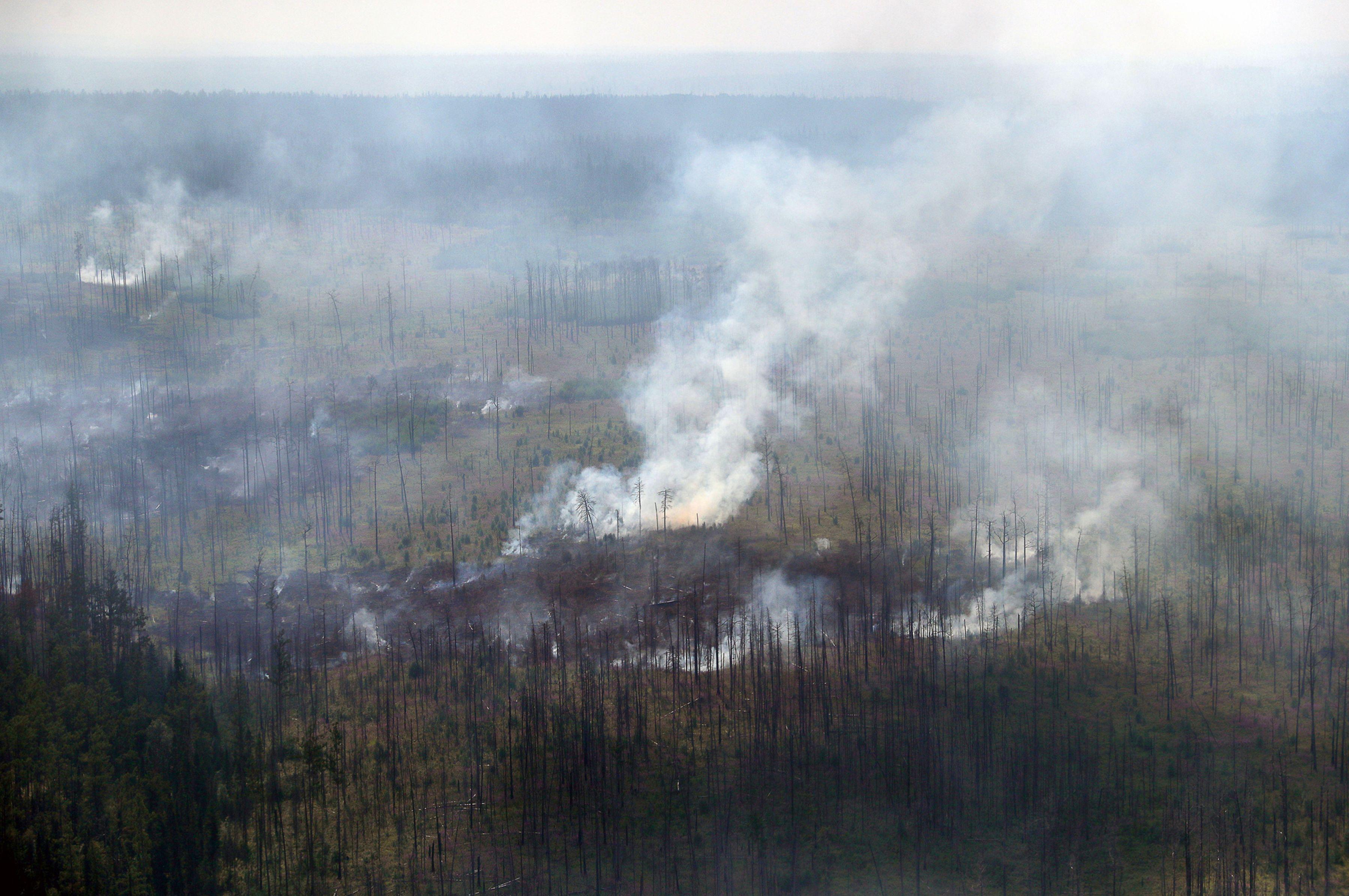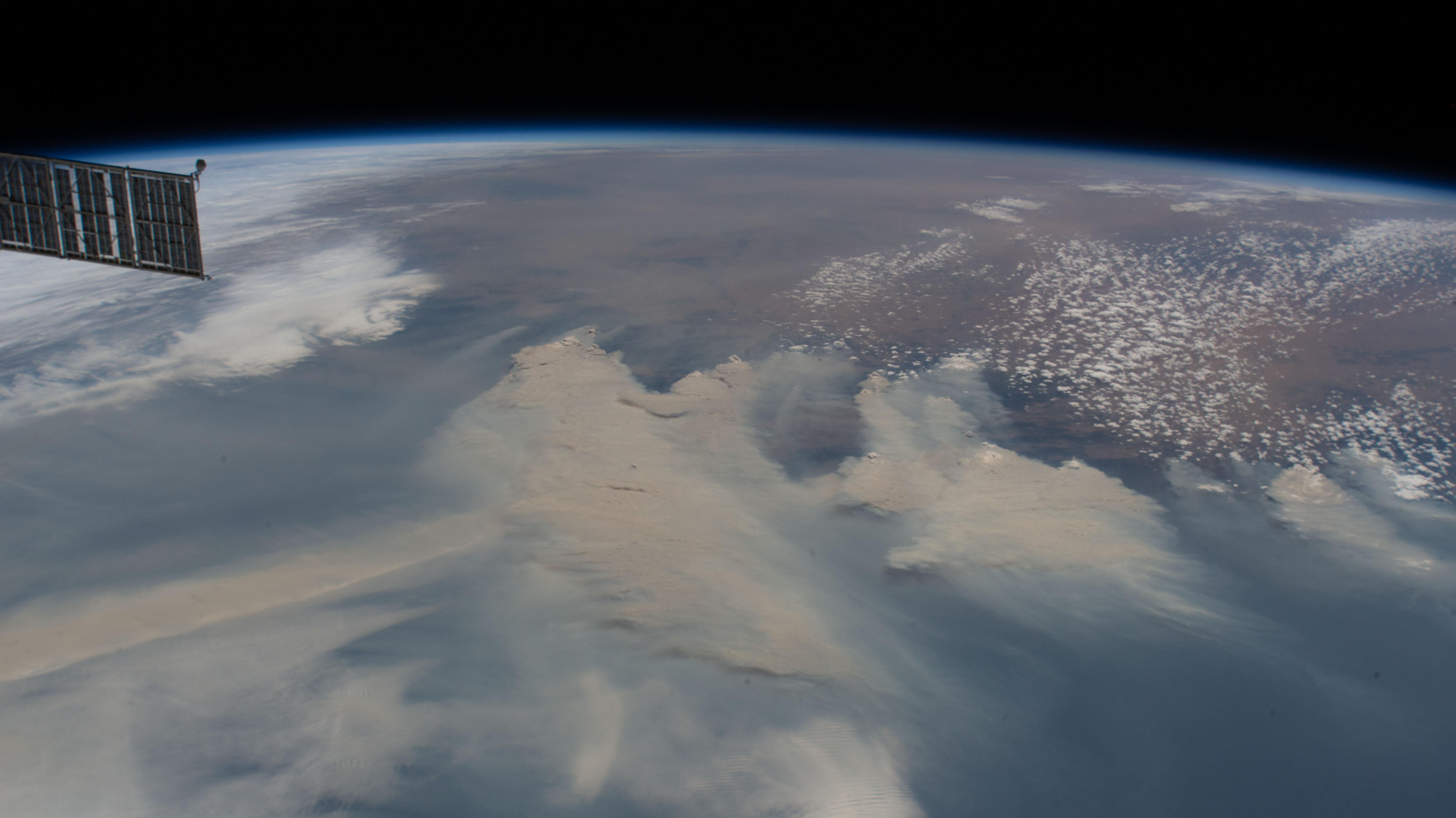“Huge forest fires put our health at risk”
After Australia, Siberia is burning, indicating that the frequency of such events is on the rise, with myriad dire consequences: devastated ecosystems, risk of desertification, CO2 emissions, toxic particles, further climate impacts... An expert in atmospheric processes at EPFL, Athanasios Nenes shares his views about it.
For weeks, the huge fires that consumed Australia at the beginning of this year were front-page news – and a major cause of global concern. Now, Siberia – Russia’s northernmost region – is experiencing wildfires after record spring heat, with temperatures sometimes exceeding 30 degrees in May and an average of 10 degrees above seasonal standards. In 2019, unusually widespread fires swept through a million hectares of forest in the region. And there are indications that so-called “zombie” fires, which survived the winter, are re-emerging across the Russian Arctic.
Climate scientists warn that this kind of event will become increasingly commonplace in the future, and studies have even shown that climate change had greatly increased the risk of the massive fire event in Australia. But what about the long-term consequences for the environment, the climate and our health? We asked Athanasios Nenes, who leads EPFL’s Laboratory of Atmospheric Processes and their Impacts (LAPI), for his views. Nenes is one of the world’s foremost experts in atmospheric processes and suspended particulate matter (aerosols). His current research, which is funded by the European Research Council, focuses on the impact of biomass-burning aerosols on health and climate.
- What do these new fires in Siberia tell us about how the climate is changing?
 "These fires are perhaps even more concerning than the ones in Australia. They have the potential to accelerate warming in the Arctic, which is already heating up much more quickly than the rest of the planet. The vast Arctic peatlands, which are sustained by permafrost, are now thawing. This can release huge amounts of carbon back into the atmosphere. Peat is also flammable. Once ignited by a lightning strike, it can burn for weeks to months. The embers can even survive the winter, reigniting a large fire the following summer. Fires have a dual effect: as well as melting permafrost directly, they also darken the surface. This further accelerates the melting of permafrost and ice because a darker surface absorbs more of the sun’s heat. Decaying peatlands can also emit large quantities of methane, which is a very potent greenhouse gas.
"These fires are perhaps even more concerning than the ones in Australia. They have the potential to accelerate warming in the Arctic, which is already heating up much more quickly than the rest of the planet. The vast Arctic peatlands, which are sustained by permafrost, are now thawing. This can release huge amounts of carbon back into the atmosphere. Peat is also flammable. Once ignited by a lightning strike, it can burn for weeks to months. The embers can even survive the winter, reigniting a large fire the following summer. Fires have a dual effect: as well as melting permafrost directly, they also darken the surface. This further accelerates the melting of permafrost and ice because a darker surface absorbs more of the sun’s heat. Decaying peatlands can also emit large quantities of methane, which is a very potent greenhouse gas.
- How does the vegetation influence the kind of plumes and gases released into the atmosphere?
The vegetation is quite different according to the regions, and variations in carbon content can affect emissions. But combustion temperature is a much more important factor in determining what’s emitted into the atmosphere. We talk about two types of fire: flaming (high-temperature) fires and smoldering (low-temperature) fires. Emissions of toxic compounds, aerosols and precursors tend to be higher in the smoldering phase because the combustion is incomplete. Flaming fires tend to emit more CO2 and black carbon (soot), both of which can warm the climate. Peat fires tend to be smoldering, meaning they can burn for weeks or months on end. The vast amount of smoke they produce causes regional haze, and of course they release large amounts of CO2 and methane – two greenhouse gases – into the atmosphere.

Fire and smoke in Siberia in Summer 2019. (c)Greenpeace Russia
- We know that these fires release toxic particles that can affect our respiratory systems. Does this mean people might be more vulnerable to the virulent version of the COVID-19?
Absolutely. The populations in urban environments and other locations that are exposed to high levels of pollutants are more likely to have compromised respiratory, cardiac and immune systems and even conditions like dementia and diabetes – and are therefore more vulnerable to infection from the coronavirus. Biomass-burning smoke is particularly toxic, containing a large number of carcinogens, as well as compounds that cause oxidative stress upon inhalation. Besides, the effects of smoke aren’t only felt near the source – where’s it most apparent to people – but also much further away, where the particles have become diluted and indistinguishable from the background. So even if you don’t see the smoke, its effects are still there – on both health and climate. A recently published study showed that this old, background smoke can have just as big an effect on climate as freshly emitted smoke.
- Is the next big fire event likely to be in the Amazon rainforest again?
The real question is whether climate change will place increasing stress on the planet’s large forested areas. And the answer is yes. The Amazon in particular is suffering from many decades of severe deforestation, which, together with wildfires, is vastly accelerating the rate of loss. It’s estimated that, at some point, the rainforest will collapse because it won’t be able to maintain the rainwater needed to sustain it.
- What are the long-term effects of the huge fires we’re seeing in many parts of the world?
There are many effects. First, on the ground, these fires can dramatically alter ecosystems. When trees are seriously damaged, they take a long time to regenerate and may never recover. Because forests store water, they act like a buffer. Once they’re gone, that buffer – and the associated water – is eventually lost, leading to desertification. This is certainly possible for Australia, and for other drought-prone parts of the world. And also because of land-use change from human encroachment. We see that a lot in Brazil: after forest fires, the “free land” is used for agriculture, cattle farms and other uses..
Forest fires also release a lot of particulate matter into the atmosphere, where it can remain for weeks on end. These particles are transported all over the world, affecting air quality over vast regions. They contain soot and brown-colored molecules that absorb sunlight, thereby accelerating climate warming. And if they fall on ice and snow – as we’ve seen in the Arctic from fires in Siberia – they can darken these normally highly reflective surfaces and cause them to melt more quickly. Smoke from the fires in Australia turned the surface of some glaciers in New Zealand orangey-brown, and there’s evidence to suggest that it even reached coastal areas of the Antarctic.
And of course, the CO2 trapped in these forests – some of which is relatively ancient – gets released back into the atmosphere. Smoke also contains nutrients like nitrogen and iron. Eventually, these nutrients are deposited on the ground or over the oceans, where they act as a fertilizer. But in general, burning biomass – either in forests or in grasslands – can alter the climate in many different ways. Some are immediate, while others are much more long-term.
- Why will this kind of event be more frequent in the future?
Because of changes in precipitation and temperature, land-use change, and other effects associated with climate change and human activities. Many areas are already experiencing extended droughts and are much more susceptible to vast fires. But fires aren’t always a bad thing. They’re part of the natural cycle of ecosystems, some of which have evolved to need fire to germinate seeds. But the problem is that climate change could throw ecosystems “off balance” and lead to catastrophic fires, like the ones we’ve seen in Australia and Siberia, but also in the Mediterranean, for example. Biomass burning, which is a persistent seasonal feature in the region, will likely get worse.
- Can we offset the loss by planting large numbers of trees?
Forest management can indeed help mitigate some of the effects of climate change. It isn’t an easy task either, and dealing with the disappearance of a forest the size of a city is a very different proposition from one the size of Switzerland. The magnitude of the problem is the big deal here. And these aren’t just onetime events. They’ll happen again and again, and in areas of the world that have rarely seen them before. You only have to look at the Sweden fires in the summer of 2018, or the fires in Greenland, to see the direct consequences of climate change in action.

The plumes of smoke are visible on the satellite images. Here, the Australian fires in early 2020. (c)NASA
- How do the effects differ if the smoke stays in one area or spreads in the atmosphere?
It depends how much smoke is produced, and how often. Large fires tend to generate considerable amounts of smoke, which persists for weeks in the atmosphere. You can see it in satellite images. It interacts with sunlight, affects clouds and impacts the climate. Fortunately, particles don’t stay in the atmosphere forever. But if you have more frequent fires, you basically have a lot more particles in the air all the time, with impacts on the climate, visibility, and the health of living beings. In Europe, for instance, sometimes half or more of the particle mass we breathe can be attributed to fires – either forest fires in summer or wood burning in winter. In other words, we’re continuously breathing smoke. Now imagine if forest fires become more frequent and prevalent. That will clearly mean we will breath unhealthier air. For humans and many ecosystems, having more fires is just not a good thing."
To go further:
Forest fires in 2019:
https://www.youtube.com/watch?v=KnYGSetNokI
Global Forest Watch:
https://fires.globalforestwatch.org/home/
Fire Information for Resource Management System:
https://firms.modaps.eosdis.nasa.gov/map/#t:adv;d:2020-06-14..2020-06-15;@0.0,0.0,3z
Earth Data, Nasa:
https://earthdata.nasa.gov/earth-observation-data/near-real-time/firms/active-fire-data
Earth Observatory, Nasa:
https://earthobservatory.nasa.gov/features/BiomassBurning